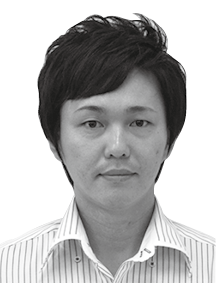The improvement of “ordinary capabilities” to make more efficient use of business resources and maximize returns is an important challenge for companies. Meanwhile, digital technologies such as the IoT and AI have delivered significant benefits in terms of efficiency improvement, cost reduction, reliable factory operation, and quality management. To achieve and maintain corporate competitiveness in the future, however, will require the enhancement of “dynamic capabilities” for self-transformation, involving the use of digital technology to reconfigure resources from both inside and outside the company in response to a changing business environment. This article focuses on production lines, describing a solution for building production lines with a high level of dynamic capability.



The term “factory automation (FA)” refers to both the process of automating production at manufacturing facilities and the systems for doing so. It had its beginnings in the steel industry in the 1950s, moving on to advanced machine tools and industrial robots made possible by the emergence of integrated circuits (ICs) in the mid-1960s. The 1970s and 80s saw a shift to digital instrumentation, enabling even more precise control. The rise of industrial computers in the 1990s brought the concept of IT to the manufacturing industry, leading to FA systems that integrate information, networks, and control in the 2000s, and on to the present day.
The focus of FA in its early days was on cutting costs by reducing the need for staff and human work, with the main objectives being to reduce labor costs, achieve higher and more consistent quality, shorten the production cycle, and stabilize production capacity (continuity of work in environments where it is difficult for people to work). This was followed by major changes in the environment in which manufacturing operated, including such issues as the fall in the working age population as a result of a low birthrate and aging demographics, the globalization of where production is sited, global warming, natural disasters in various parts of the world, and now the downturn in economic activity brought about by the worldwide spread of COVID-19. In this business environment characterized by relentless and unpredictable change, it is vital that Japanese manufacturers resolve the challenges confronting them. Amid the major reforms prompted by Industrie 4.0, FA is now set to evolve further. Recognizing how important it is to make the most of digital technologies like the Internet of Things (IoT) and artificial intelligence (AI) to optimize the processing of huge amounts of data, the need is for solutions that are designed to create smart factories with the dynamic capabilities to keep track of actual production conditions, to analyze performance, and to use the results as feedback in future production. This article describes how Hitachi goes about building production lines based on the concept of “total seamless solutions.”
Japanese manufacturers have led the world in the supply of high-quality products by taking advantage of their high level of workforce skill and meticulous management practices. With the coming of the era of mass consumption, however, companies have invested heavily, especially in automation and in the upgrading of production equipment, relocating production facilities to countries with lower wages in order to cut costs or, in Japan as well as elsewhere, by investing in reducing labor costs with a particular focus on labor-saving measures. Meanwhile, along with this ongoing investment in production equipment, aging equipment that has been in operation for 15 years or more is still to be found. This equipment requires regular maintenance, an area where highly skilled workers often continue to play an important role. Unfortunately, as a result of rigorous ongoing working practice improvements, the shortage of highly skilled workers is becoming a concern as there are now fewer opportunities for people to acquire the necessary skills.
One example is when old and poorly maintained equipment is unavailable for extended periods of time due to a fault or other such problem, resulting in work not being completed on schedule and the idling of sophisticated automatic equipment that has been newly acquired to reduce labor requirements. When this happens, it becomes clear that the real bottleneck is the absence of the highly skilled workers who used to keep aging equipment operating reliably. Even if this problem is resolved, the end result tends to be seen as one less worker. This comes about because Japanese manufacturers have used estimates of headcount reduction as a basis for deciding where to invest. This in turn is because the number of workers who are no longer needed when manual labor is replaced by machinery is an easy way to measure the improvement in production capability. Even amid the current growth in IT use, there are instances where companies are unable to accurately measure the benefits of IT investment in manufacturing operations, or where they have abandoned investment because there is a need for data entry and this would result in an increase in the amount of manual work. In other words, one of the challenges for manufacturing operations is that they still find it difficult to quantify benefits by any criteria other than headcount reduction.
What the ideal production line needs in this time of frequent change in the business environment is dynamic capability, meaning the ability to produce the required products in the required quantity at the required time, and at minimum cost. In turn, the requirements for achieving this include equipment that always operates reliably, the balancing of the different processes involved, optimal material supply and worker assignment to eliminate delays and unnecessary work, and a rapid response to unexpected change. While Japanese manufacturers have benefitted from their high level of workforce skill and meticulous management practices, as noted above, it is through these strengths that they have kept equipment operating reliably, maintained a balance across different processes, optimized materials and workers, and eliminated waste. Unfortunately, the current trends toward fewer workers, the use of sophisticated equipment for automation, and declining number of maintenance staff mean they are struggling to maintain these capabilities, with fewer highly skilled workers to call on.
One way to overcome this challenge is the use of the IoT for workplace digitalization. High-level skills and meticulous management practices are underpinned by the five senses (sight, hearing, touch, smell, and taste) and experience. The former correspond to sensing technology while the ability of AI learning techniques to take the place of experience is expanding in scope. Meanwhile, there is a need for all-encompassing digital technologies that can optimize large amounts of data and information for specific purposes to enable more advanced operation. Hitachi’s concept of total seamless solutions is about building smart factories that use this digital technology to provide a window on production and analyze performance while also providing accurate and timely feedback to future production. The following section explains this in more detail.
Hitachi offers consulting, IT, operational technology (OT), and products that provide a pathway to solving the various challenges faced by customers that extend from management to the workplace. Hitachi’s strength lies in the extensive scope of such capabilities that are available to it from across the group. Deploying Lumada-centered total seamless solutions, Hitachi is working to address customer’s issues (see Figure 1).
The concept behind total seamless solutions for building production lines involves an infinite loop that connects the technologies associated with each aspect, namely line concept; operational design; line engineering; line installation; after-sale services; monitoring of human, machine, material, and method (4M) data; bottleneck analysis; and various forms of optimization (see Figure 2).
The loop uses a common set of data across both OT and IT and across both cyber and physical spaces to create smart factories equipped with dynamic capabilities so that the different aspects work in tandem toward the rapid achievement of system-wide optimization.
Figure 1 — Concept Behind Total Seamless Solutions that Draw on Hitachi’s Strength  Based on its Lumada digital platforms, Hitachi supplies total solutions that use products, OT, and IT seamlessly connect management and workplaces.
Based on its Lumada digital platforms, Hitachi supplies total solutions that use products, OT, and IT seamlessly connect management and workplaces.
Figure 2 — How Total Seamless Solutions from Hitachi Seek to Deliver Ongoing Value  Hitachi contributes to customers’ ongoing development through a value cycle that is based on collaborative creation, using Lumada to combine its cyber-based information technologies with operational technologies that are mainly the domain of physical space.
Hitachi contributes to customers’ ongoing development through a value cycle that is based on collaborative creation, using Lumada to combine its cyber-based information technologies with operational technologies that are mainly the domain of physical space.
Hitachi supplies robotics solutions for automation that form part of the manufacturing equipment and digital solutions that connect management systems, ensuring that control maintains consistency between information and products in physical space (see Figure 3). Example robotics solutions include welding, assembling, and material handling systems for moving products around the factory as needed. Similarly, digital solutions include control systems for specialized equipment such as automated warehouses or machine tools that receive instructions from production management systems and translate these into actual work schedules.
Figure 3 — Manufacturing Solutions from Hitachi Industrial Equipment Systems Co., Ltd.  Hitachi Industrial Equipment Systems delivers solutions that meet demand from the manufacturing industry for smart factories.
Hitachi Industrial Equipment Systems delivers solutions that meet demand from the manufacturing industry for smart factories.
Hitachi also supplies simulations running in cyber space of the physical equipment referred to above and operations design systems that automatically generate operating sequences and programs. One example might be trialing behavior under abnormal conditions or conducting virtual pre-production evaluations of functions and performance that replicate actual operation, using a cyber-space model of a smart production line made up of multi-function robot cells that can be used to run simulations for automatically generating operating programs and parameters.
The simulations described above can be linked to the actual installed systems to monitor their behavior in physical space from cyber space. The data required for bottleneck analysis or the analysis of 4M data for specific purposes can also be linked to the actual equipment. By using IT systems to run optimization simulations using actual data and utilizing the results to provide feedback to the physical equipment in the form of operational parameters, operational continuity can be maintained by changing the operation in accordance with the simulation.
In situations such as when unexpected circumstances result in a major loss of productivity, or when production line downtime or a lower availability ratio occurs due to equipment faults, simulations using actual data are run in cyber space to identify the optimal line configuration and then the physical equipment is dynamically modified to match. The flexibility to make these changes can be achieved, for example, by changing the number of processes that a multi-function robot cell needs to deal with, or by increasing or decreasing the number of multi-function robot cells. In other words, the essence of smart factories equipped with dynamic capabilities is that they have this flexibility.
Figure 4 — Use Case Involving Application of Total Seamless Solution to Production Line  Hitachi configured a cyber-physical system for achieving optimal operation.
Hitachi configured a cyber-physical system for achieving optimal operation.
Figure 4 shows a use case involving the installation of a production line. Here, the following steps were undertaken to resolve the issues associated with newly installed equipment failing to achieve its planned key performance indicators (KPIs)*.
In this way, Hitachi overcomes the challenges facing production lines and achieves optimal operation by adopting the technologies and practices described above.
This article has described total seamless solutions from Hitachi with a focus on the optimal operation of production lines. In the future, Hitachi intends to continue working with digital technologies as they continue to advance, including AI and the use of simulation in improvement activities at manufacturing workplaces, commercializing these in ways that make them easier to use in order to help improve dynamic capabilities for dealing with changing business conditions that take such forms as market shifts, pandemics, and geopolitical risk in terms of system-wide optimization that seamlessly connects management and workplaces.